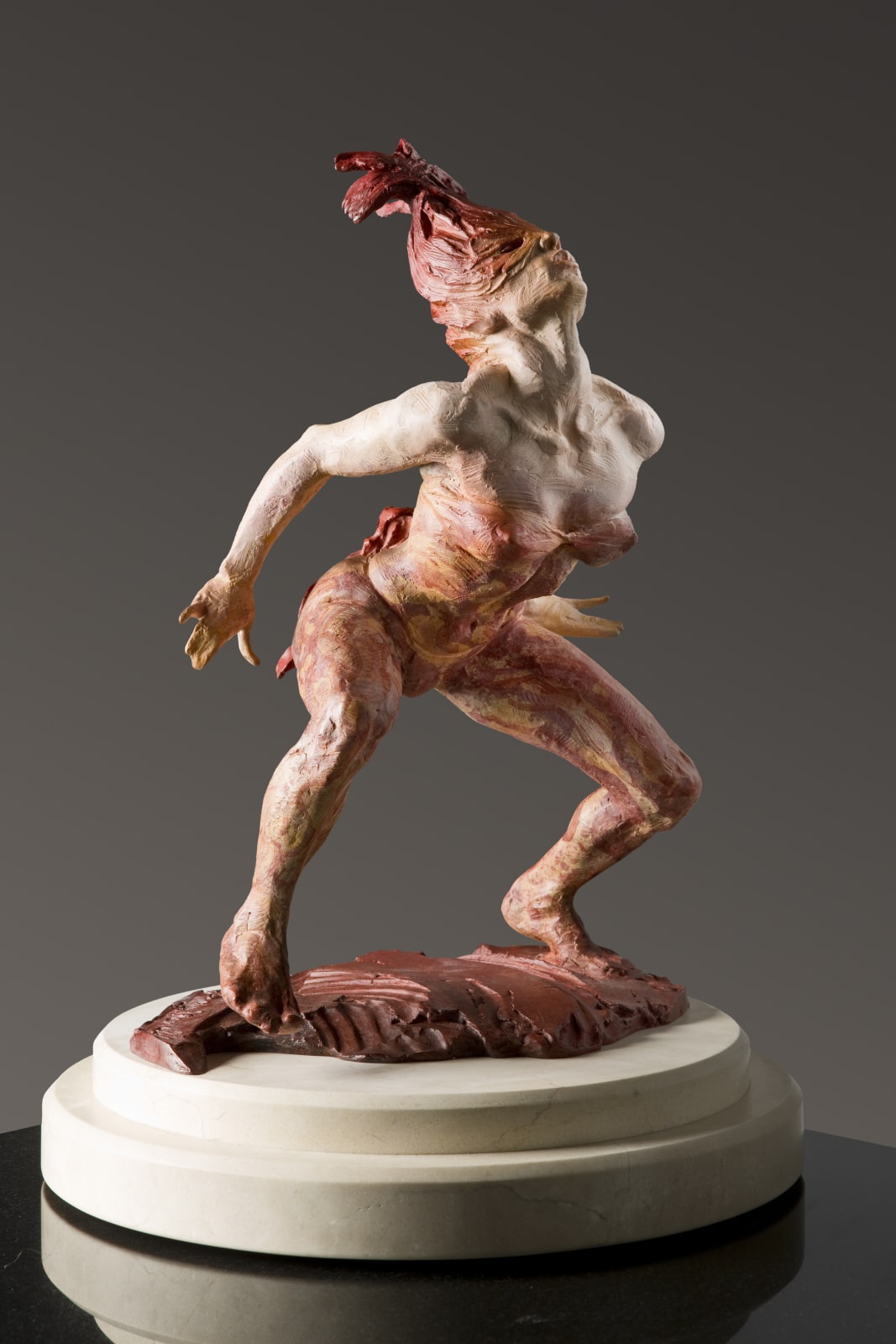Richard MacDonald American, b. 1946
A painter has only two dimensions to work with, so he strives to create the illusion of volume—a sculptor has three dimensions to work with, so he strives to create the illusion of movement. Richard MacDonald has imbued bronze with a sense of movement to a rare degree, from the subtlest suggestions of breath and thought, to figures that convey the most strenuous athletic feats. Dance is human movement raised to an art form and this art form is where Richard MacDonald finds his truest subject.
“Brazilian Feathers” does not spring from the refined world of ballet, but from the elemental, tribal rhythms of a far earlier form of dance. Bedecked with the feathers of exotic birds, this dancer conjures images of the type of dance performed barefoot around a communal fire; primitive and unrestrained. Plumed, masked, and powerful, she communicates energy and freedom, and demonstrates again that Richard MacDonald can convey the excitement of movement like no other.
- X
- Tumblr




